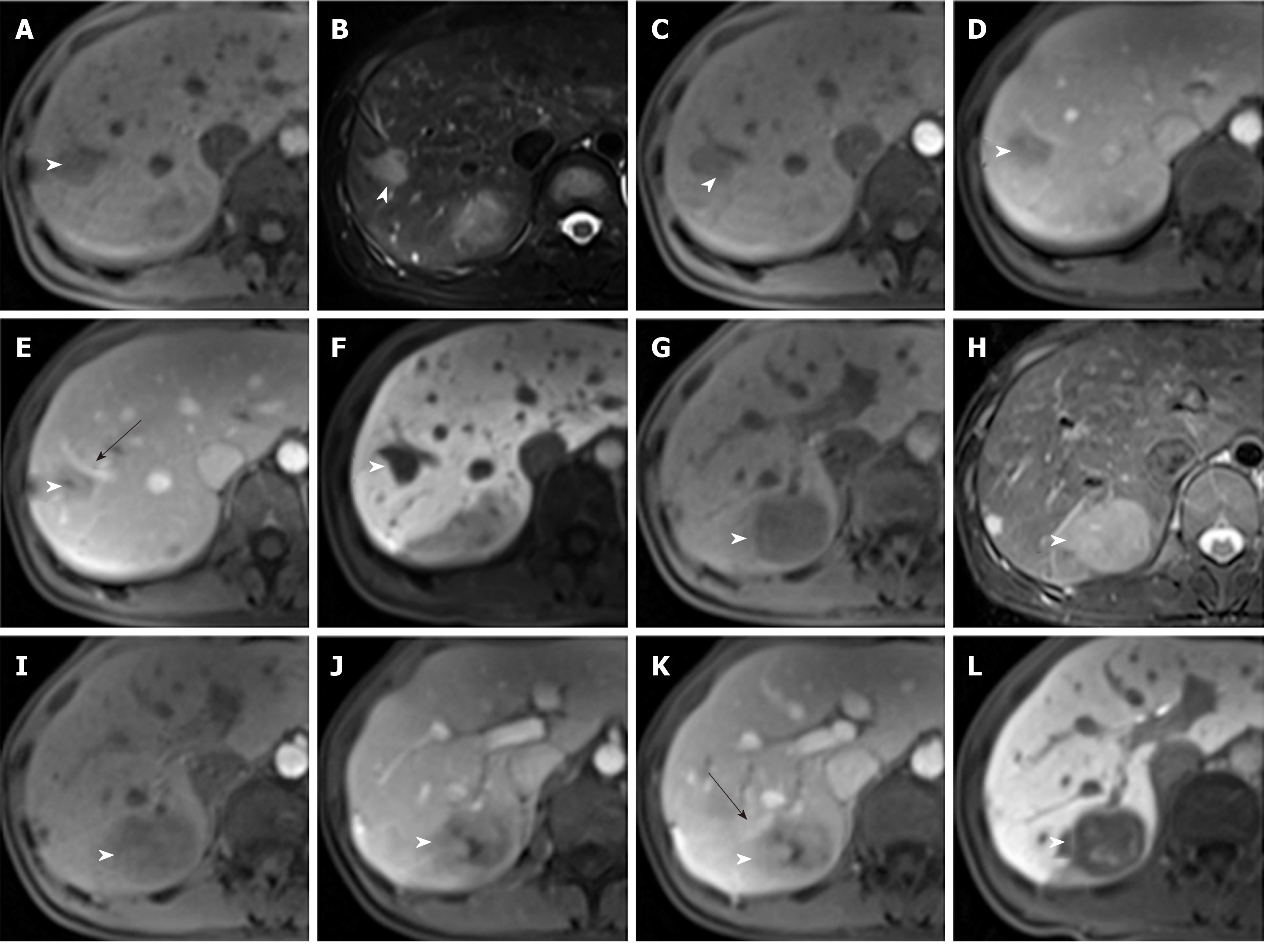Copyright
©The Author(s) 2019.
World J Gastroenterol. Dec 7, 2019; 25(45): 6693-6703
Published online Dec 7, 2019. doi: 10.3748/wjg.v25.i45.6693
Published online Dec 7, 2019. doi: 10.3748/wjg.v25.i45.6693
Figure 3 Magnetic resonance images of Case 1.
A and G: T1 weighted imaging (WI) showed two ovalular masses with heterogenous hypointense signals; B and H: T2WI showed two ovalular masses with heterogenous hyperintense signals; C-E, I-K: Triple-phase enhanced magnetic resonance images showed both tumors had heterogeneous sustained hypoenhancement with internal necrosis. As enhanced scan time was extended, the range of low density components within the mass decreased. Both tumors were close to the portal vein branch (black arrows) and always exhibited hypoattenuation relative to the surrounding liver parenchyma; F and L: The hepatobiliary phase exhibited both tumors with patchy hyperintense signal. Inflammatory pseudotumor-like follicular dendritic cell tumors (black arrowheads) from the upper segment of the right posterior lobe of the liver were present in a 31-year-old Chinese woman.
- Citation: Li HL, Liu HP, Guo GWJ, Chen ZH, Zhou FQ, Liu P, Liu JB, Wan R, Mao ZQ. Imaging findings of inflammatory pseudotumor-like follicular dendritic cell tumors of the liver: Two case reports and literature review. World J Gastroenterol 2019; 25(45): 6693-6703
- URL: https://www.wjgnet.com/1007-9327/full/v25/i45/6693.htm
- DOI: https://dx.doi.org/10.3748/wjg.v25.i45.6693









